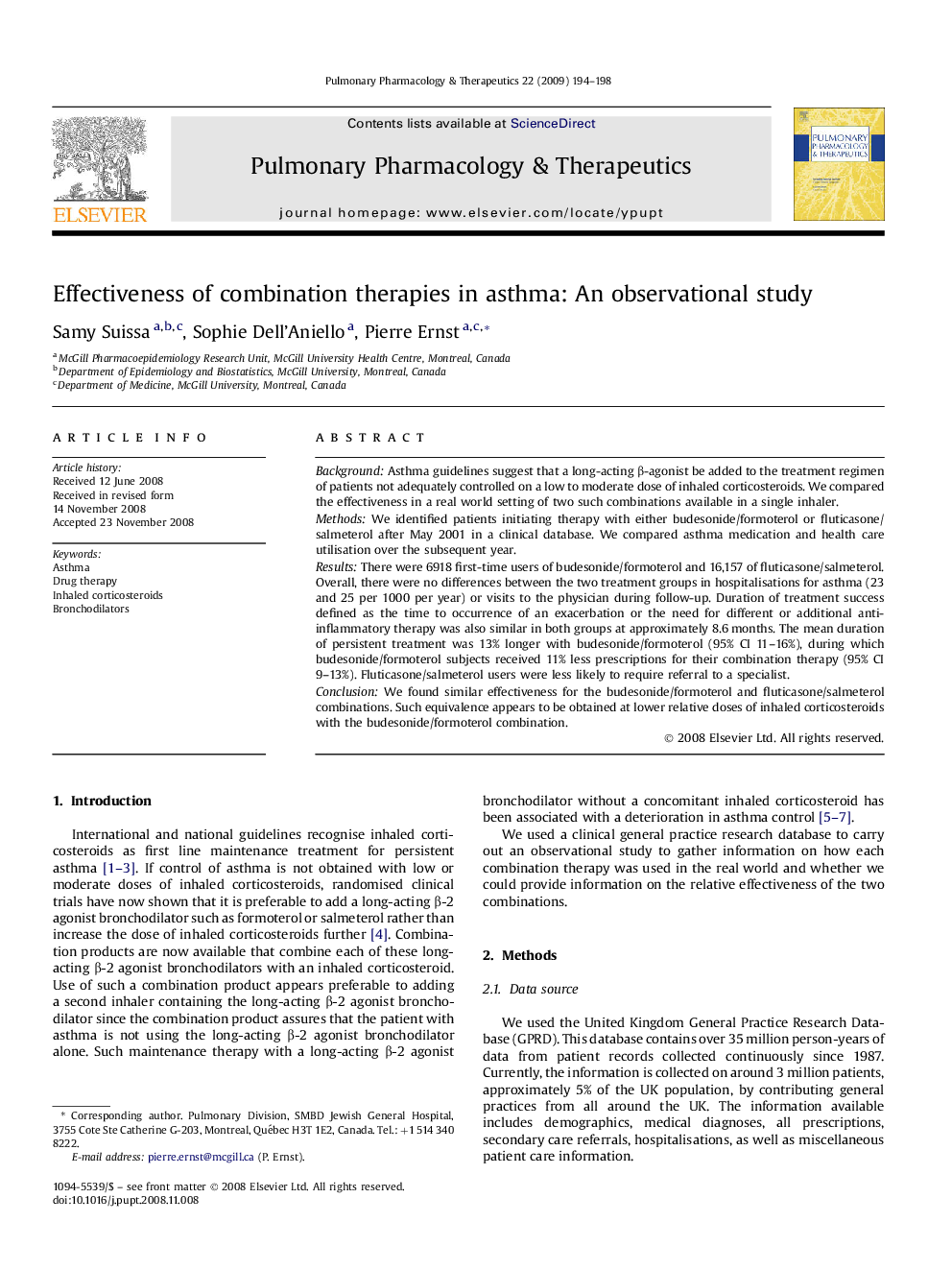| Article ID | Journal | Published Year | Pages | File Type |
|---|---|---|---|---|
| 2567596 | Pulmonary Pharmacology & Therapeutics | 2009 | 5 Pages |
BackgroundAsthma guidelines suggest that a long-acting β-agonist be added to the treatment regimen of patients not adequately controlled on a low to moderate dose of inhaled corticosteroids. We compared the effectiveness in a real world setting of two such combinations available in a single inhaler.MethodsWe identified patients initiating therapy with either budesonide/formoterol or fluticasone/salmeterol after May 2001 in a clinical database. We compared asthma medication and health care utilisation over the subsequent year.ResultsThere were 6918 first-time users of budesonide/formoterol and 16,157 of fluticasone/salmeterol. Overall, there were no differences between the two treatment groups in hospitalisations for asthma (23 and 25 per 1000 per year) or visits to the physician during follow-up. Duration of treatment success defined as the time to occurrence of an exacerbation or the need for different or additional anti-inflammatory therapy was also similar in both groups at approximately 8.6 months. The mean duration of persistent treatment was 13% longer with budesonide/formoterol (95% CI 11–16%), during which budesonide/formoterol subjects received 11% less prescriptions for their combination therapy (95% CI 9–13%). Fluticasone/salmeterol users were less likely to require referral to a specialist.ConclusionWe found similar effectiveness for the budesonide/formoterol and fluticasone/salmeterol combinations. Such equivalence appears to be obtained at lower relative doses of inhaled corticosteroids with the budesonide/formoterol combination.
